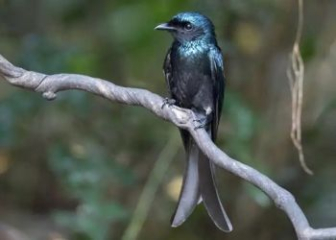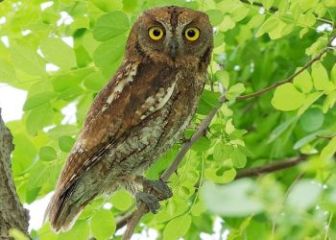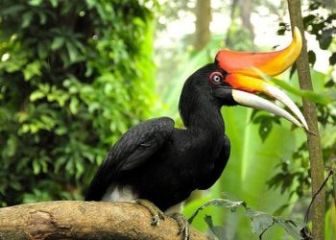Fantail Bird - Origin, Characteristics and Habits, Behavior
Blog | by
The fantail (Rhipidura javanica) is a wild bird in Southeast Asia, with a small appearance, simple black and white feathers, long tail and always spread out like a fan.
The Fantail Bird (scientific name: Rhipidura javanica) is a small but graceful wild bird, notable for its long fan-like tail, flexible flight, and clear call. Although this bird is not kept as a pet, it receives the attention of many people because of its important role in controlling harmful insects.
If you want to learn more about the origin, characteristics and habits of the Java fantail bird, please read the article below by beautiful nicebirds .
Origin & distribution of Java fantail
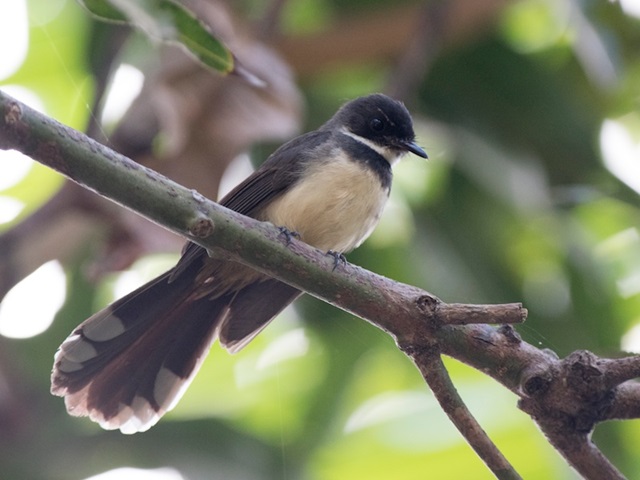
Learn about the origin of the Javan fantail.
Java fantail bird, also known as fantail bird, Java fantail bird, scientific name is Rhipidura javanica, belongs to the order Passeriformes, family Rhipiduridae.
This is a native bird of Southeast Asia, first appearing on the islands of Indonesia, typically Java - This is also the reason why they are called "Java fantail".
Currently, Java fan palm is widely distributed throughout Southeast Asia and South Asia, typically in the following countries:
- Indonesia : Widely distributed, indigenous
- Vietnam : Commonly distributed in low forests, stream banks,...
- Thailand, Laos, Cambodia : Appears relatively stable
- Brunei, Myanmar, China : Recorded but not common
Morphological characteristics of Java fantail bird
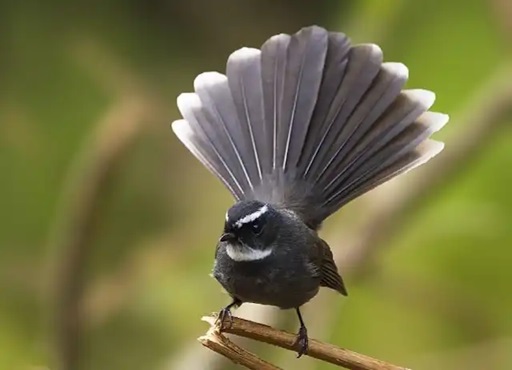
A Javan fantail bird spreading its tail beautifully.
Let's learn in detail about the morphological characteristics of the Javan fantail to see what they look like and how they differ from other birds in the fantail family.
Size:
- Total body length: 17 - 20 cm (including tail)
- Tail length: 8 - 11 cm, accounting for more than half of body length
- Weight: 10 - 12 grams
Head :
- Small, round head
- Big, black eyes, good vision in the bushes
- Short beak, slightly curved down
- Some species will have an additional white translucent ring around the eye.
Fur color :
- Back and wings are grayish brown, dark brown
- Chest and belly are ivory, creamy white and yellow.
- The neck often has a black bib-shaped streak or a black horizontal ink streak, depending on the species.
- Small, round wings that flap continuously when flying
Tail :
- The tail feathers are very long, consisting of 10 long tail feathers that spread out like a fan.
- The tail margin is usually a white or cream stripe that contrasts with the darker tones.
Foot:
- Legs are slender, dark gray or dark brown.
- Sharp, slightly curved toenails
Distinguishing between male and female birds:
- Male Java Fantail: Darker coat, darker chest, longer and more flared tail
- Female Java Fantail: Lighter coat color, less patterned neck, smaller tail
- Young Java Fantail (baby bird): Fluffy, greyish-brown feathers, pale white belly, short tail that is not yet strongly flared
Habits & Behavior of the Javan Fantail
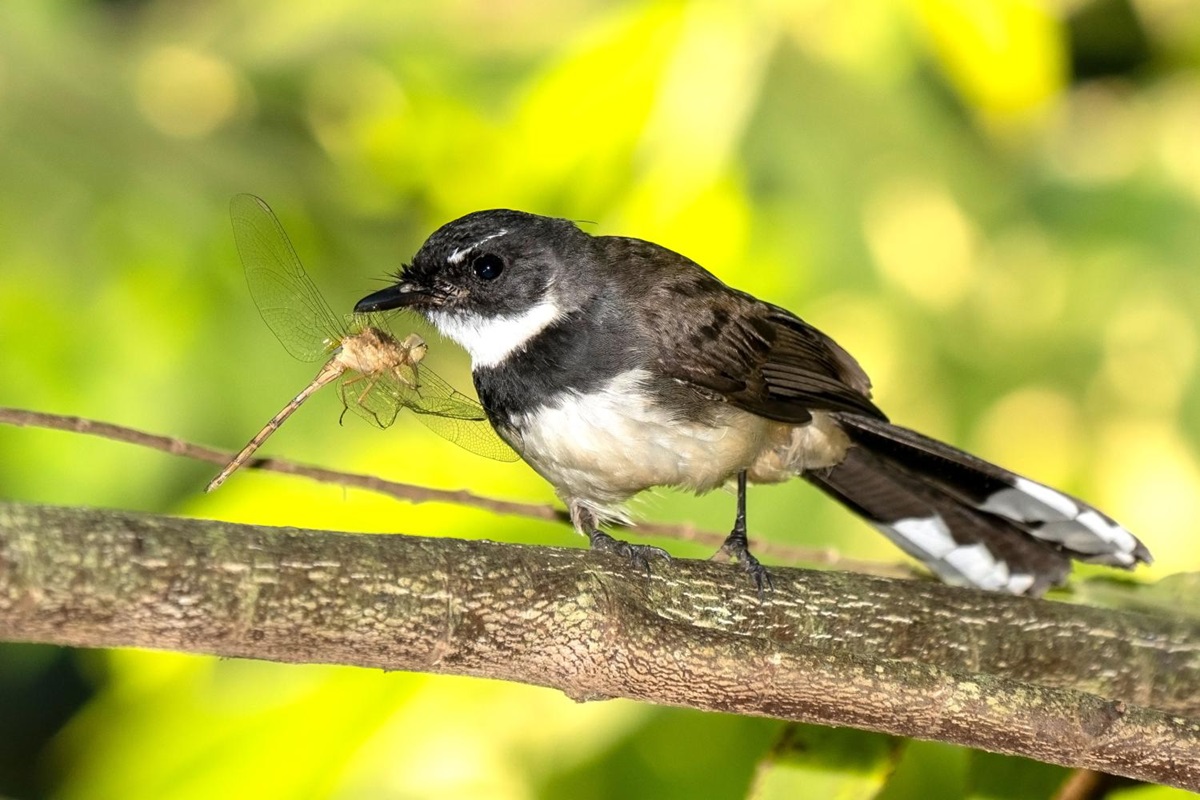
Javan fantail catching a dragonfly.
Active and moving constantly
Java fantails are active birds and move constantly by flying low, flapping their wings rapidly or spreading their tails. They rarely stand still on a branch for long.
When perched in one place, this bird often bounces slightly, spreading its tail as if it is fanning itself - this is also a characteristic behavior that helps you easily recognize this bird species.
Is a small flying insectivorous bird.
In nature, Java fantails are birds that specialize in eating small insects such as flies, mosquitoes, winged ants, termites, butterflies, etc.
They often hunt by "flycatching" - flying quickly to grab prey in mid-air, then returning to a tree branch or perching near the ground, then swooping down to grab prey and then flying back up immediately.
Very good call
Although Java fantails are not good singers, they are very vocal, especially when moving or foraging. Their calls are usually short, sharp, but repeated “chirp chirp”.
They use their calls to alert others, attract mates, or establish territory.
Reproductive behavior
Here are some important points about the reproductive habits of Java fan palm, let's learn more.
- Breeding season from April to August
- Nests are small, cup-shaped, suspended in trees 1 - 3 m high.
- The nest is made of twigs, dry leaves, feathers and spider silk,...
- Each clutch of female birds contains 2-4 eggs, then both the female and male birds take turns incubating the eggs and raising the chicks.
- The chicks will hatch after about 15 days, then they and their parents leave the nest early to learn to forage.
very shy
Being wild birds, Java fantails are very shy but they are not overly afraid of people. When they detect signs of danger, they will immediately fly into the bushes, occasionally circling to examine the situation.
In particular, this bird species is very sensitive to environmental changes. If trees are cut down, pesticides are sprayed, or there is too much noise, they will immediately disappear from that disturbed area.
Are Java Fantails recommended as pets?
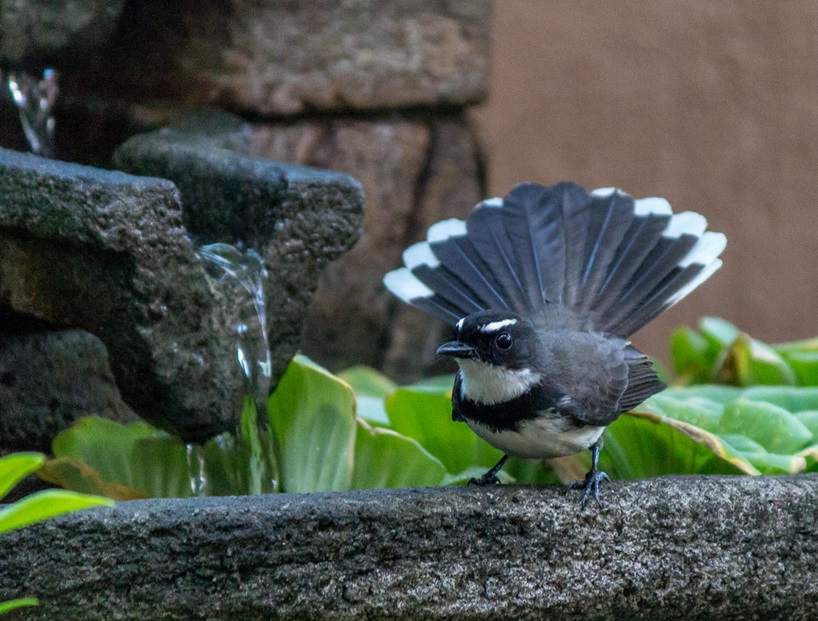
A Javan fantail bird posing with its tail spread.
Although Java fantail birds have a small, cute appearance, they are not recommended to be kept as pets. Let's find out the reason below.
- Being wild birds, difficult to tame: Java fantails are 100% wild birds by nature, living in flocks and having free instincts, so they are very cautious and difficult to get used to humans. When kept in captivity for a long time, they will become wild, panic and even fly around in the cage.
- Constantly moving: This bird is very active, they are always active by flapping their wings, jumping from branch to branch or swooping down to the ground to find food. Therefore, if kept in a cramped environment, they will have behavioral disorders, become restless and stop eating.
- The value of ornamental birds is not too outstanding: Although they have a small and cute appearance, their overall color is too monotonous, along with not having a good singing voice, so they are not developed in the ornamental bird market.
The role of the Javan fantail in the ecosystem
Although Java fantails are very small, they play an extremely important role in the natural ecosystem, specifically as follows:
- Control specialized insects: Java fan palm specializes in eating specialized insects such as mosquitoes, flies, winged ants, small spiders, winged termites,... this contributes to maintaining ecological balance, limiting natural pests, especially in forests, gardens,...
- Occasionally, Java fan palms also eat sap-sucking insects, honey-eating ants, etc., contributing to reducing plant pests and spreading beneficial symbiotic fungi.
- When moving through forests and gardens, this bird also helps to disperse small seeds and fungal spores, contributing to maintaining plant diversity.
- With its pretty appearance and clear voice, the Java fantail contributes to enriching the natural landscape.
Questions and answers about Java fantail?
Is the Javan fantail rare?
No, the Java fantail is a common wild bird in Southeast Asia, including Vietnam.
What do Javan fantails like to eat?
Java fan palm likes to eat small winged insects such as termites, mosquitoes, winged ants, spiders,...
Should I keep Java fantail birds as pets?
No, because this is a wild bird, difficult to tame, needs a large space to fly and a source of fresh food every day.
Can Java Fantails sing?
Yes, they can sing but not in a melody like other birds such as nightingales, magpies, etc. They only make short, repetitive "chirping" sounds.
Beautiful Javanese Fantail Bird Pictures
Let’s admire the most beautiful and authentic moments of the Javan fantail posing with its characteristic tail. We guarantee you will feel “melted” by this small, cute wild bird.
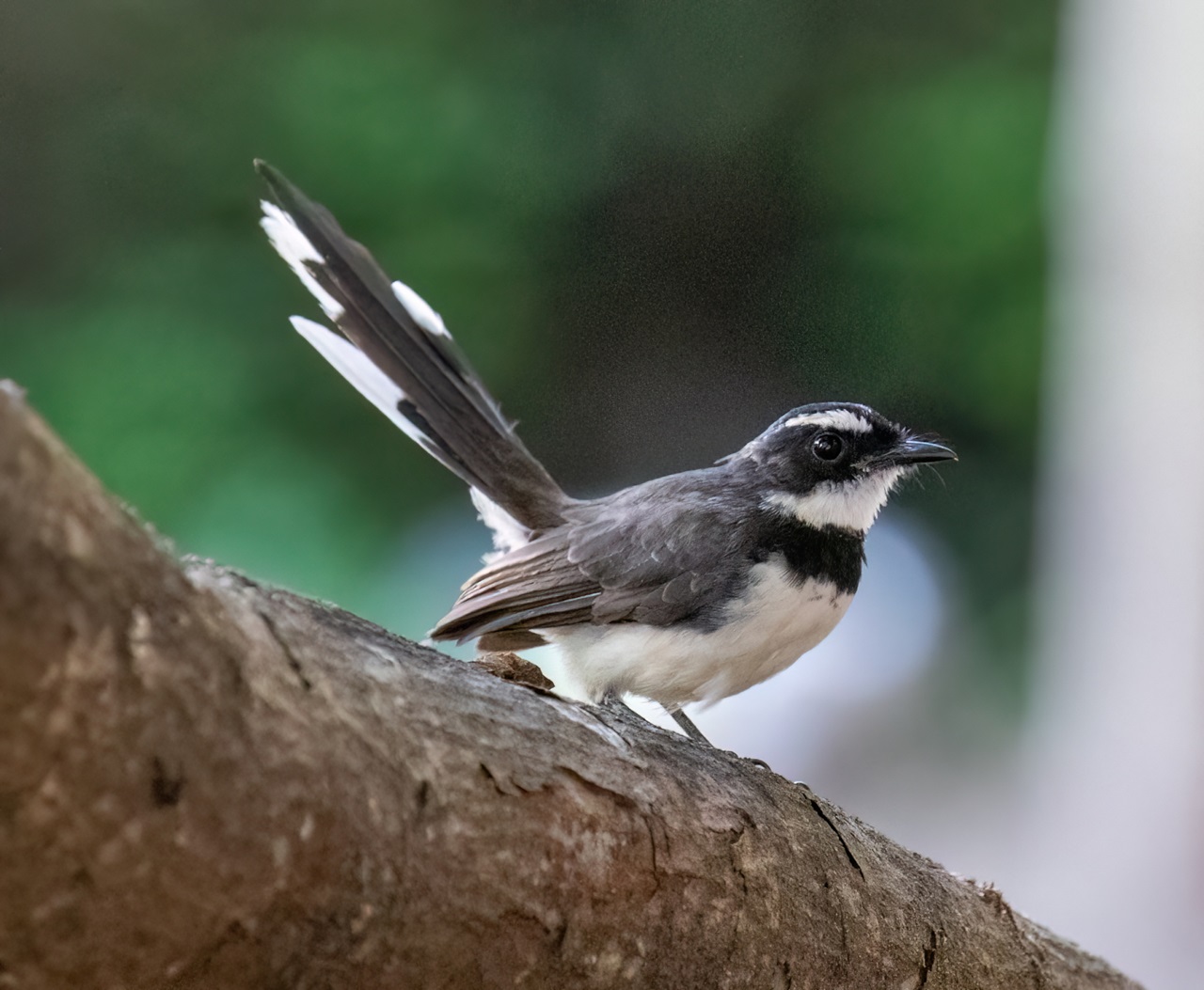
A small, adorable Javanese fantail bird.
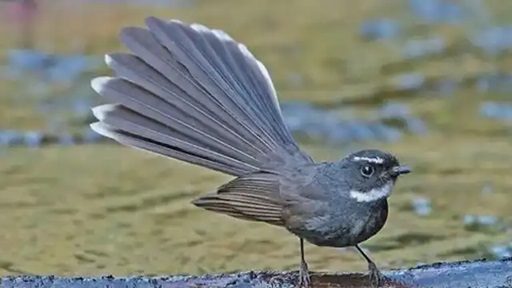
The Javan fantail spreads its tail like a fan.
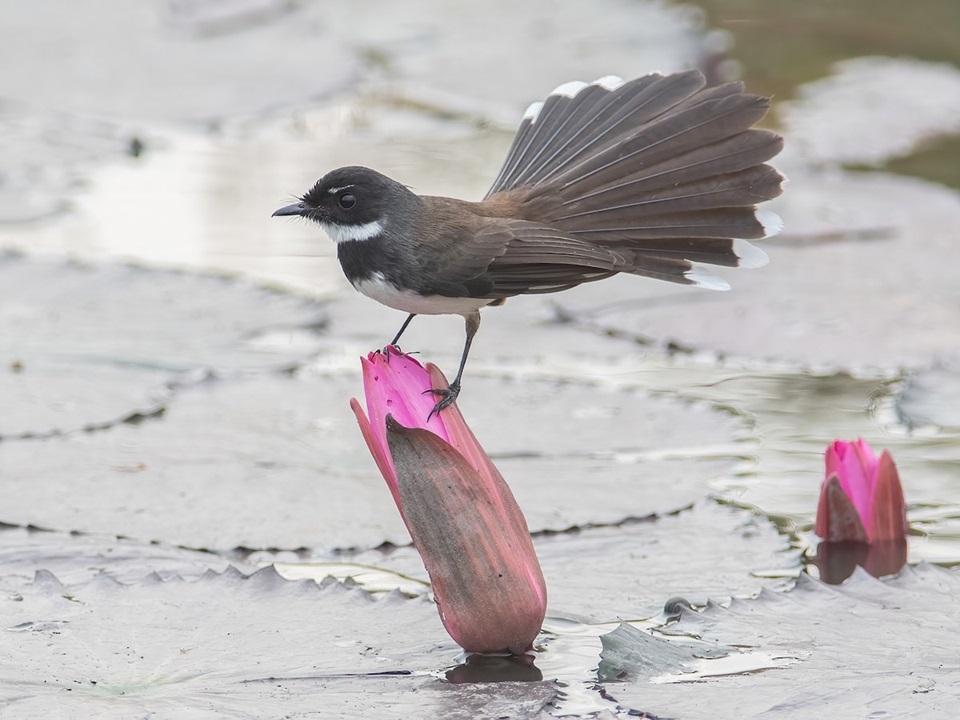
Image of a Javan fantail perched on a water lily.
.jpg)
The fan-shaped tail of the Javan fantail seen from behind.
.jpg)
The Javan fantail's plumage is black and white.
Through the article that nicebirds.net shared above, it can be seen that the Java fantail is not only a beautiful wild bird but it also plays an important role in controlling insects, enriching biodiversity. Instead of keeping this bird in captivity, creating a space and wild habitat for them is the most sustainable behavior.
Don't forget to visit our Blog section to learn more about many other interesting wild and pet birds!
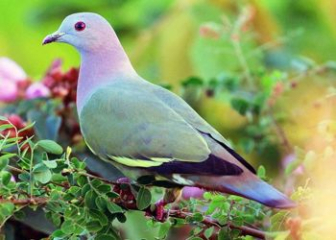
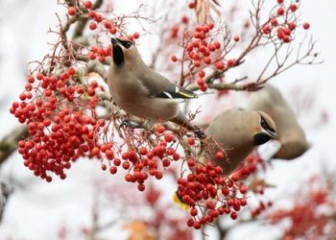
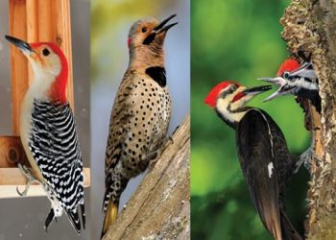

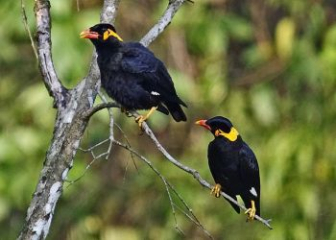
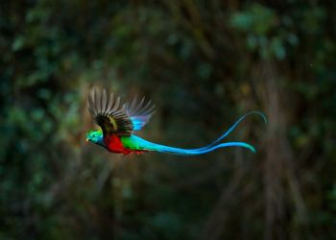

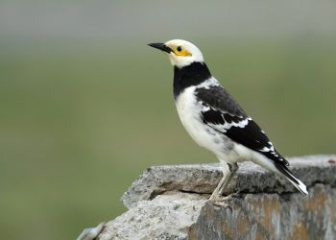
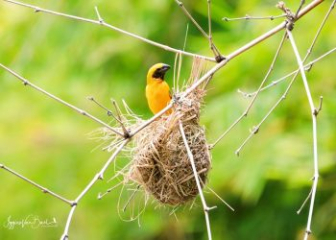
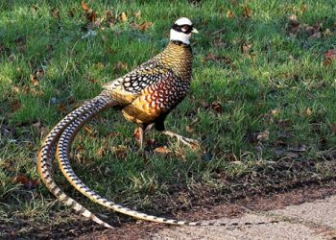
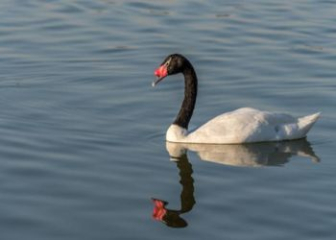
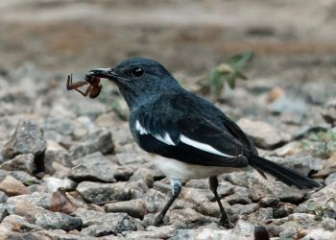
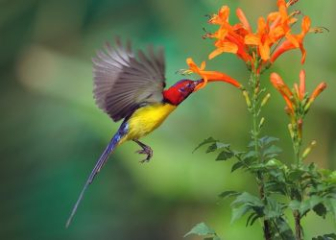
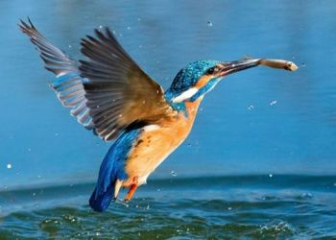
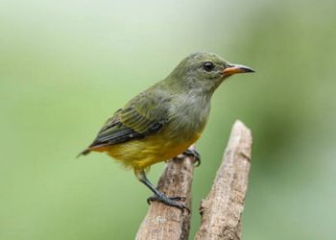
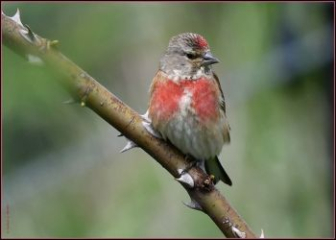
_350x250.jpg)
